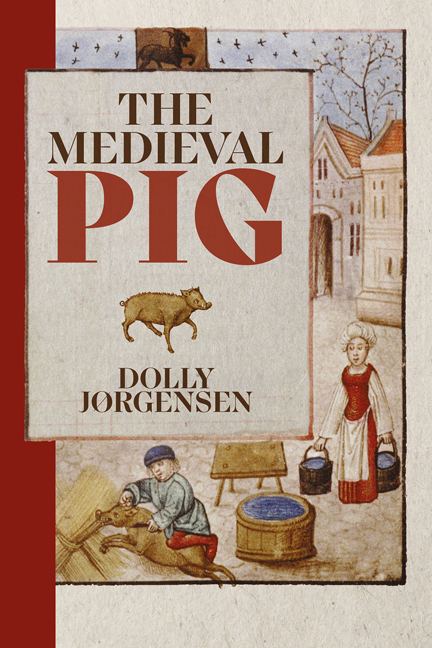5 - In the Mind
Published online by Cambridge University Press: 11 May 2024
Summary
Pigs lived in the medieval countryside and city, but they also inhabited the medieval mind. Paradoxically, while the pig was a blessing, providing meat for the winter, it was also an animal representing sin and debauchery. Camille observed that images of pigs show ‘no distinction between sacred and profane’. This chapter explores the place of the symbolic pig in medieval society, focusing on these contradictions.
Medieval European Christian notions of the pig were founded on biblical gospel stories and the medieval theological interpretation of these. There are two well-known gospel stories about pigs. The first is that of Jesus driving a legion of demons from a possessed man into a herd of swine, who then leap off a cliff and drown (Matthew 8:28–32; Mark 5:1–13; Luke 8:26–33). In this story, often called the Miracle of the Gadarene Swine, the pigs were innocent bystanders feeding nearby on a hillside while being guarded by swineherds. St Augustine interpreted this as indicating that Christ did not equate humans with animals, since he allowed the pigs to be inhabited by the demons and die. In a later interpretation of the Gadarene Swine, the thirteenth-century philosopher Albertus Magnus noted that pigs were permitted as the demon host because the pig ‘is a filthy animal, by nature, by law, by custom’. He explained that the pig's nature (by which he meant its body) breaks the rules of animals: it has a divided hoof like cattle, but does not chew cud; has nipples along the length of the body, instead of under the hind legs like cows; gives birth to many babies, unlike sheep and cows; and has soft flesh covered with bristles, rather than soft hair. He then noted that by law under Leviticus 11:7 the pig is unclean. Finally, he explained that custom deems the pig unclean because it rolls in the mud, nourishing itself on the unclean.
The common pictural composition for the Gadarene Swine miracle includes Jesus exorcising the demons from the man and the pigs in the water, perhaps based on Ottonian representations from around the year 1000, which were probably, in turn, based on now lost Carolingian models. Such images appear, for example, in the Codex Egberti of the late 900s, the Aachen Gospels of Otto III from around the year 1000, and the Getty's Anglo-Saxon leaves of around 1000.
- Type
- Chapter
- Information
- The Medieval Pig , pp. 57 - 75Publisher: Boydell & BrewerPrint publication year: 2024



